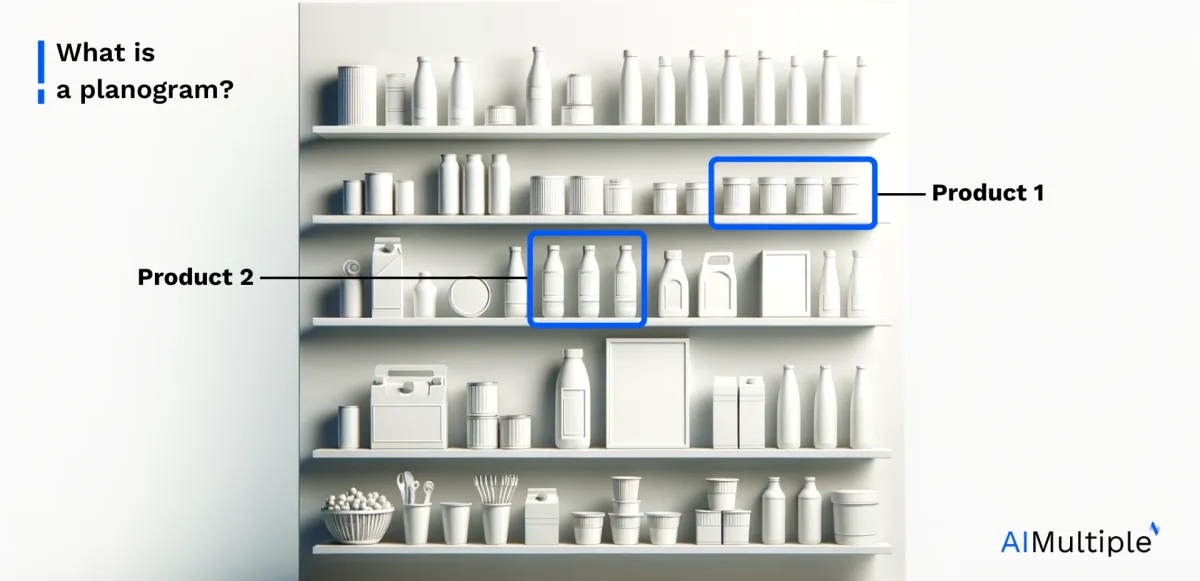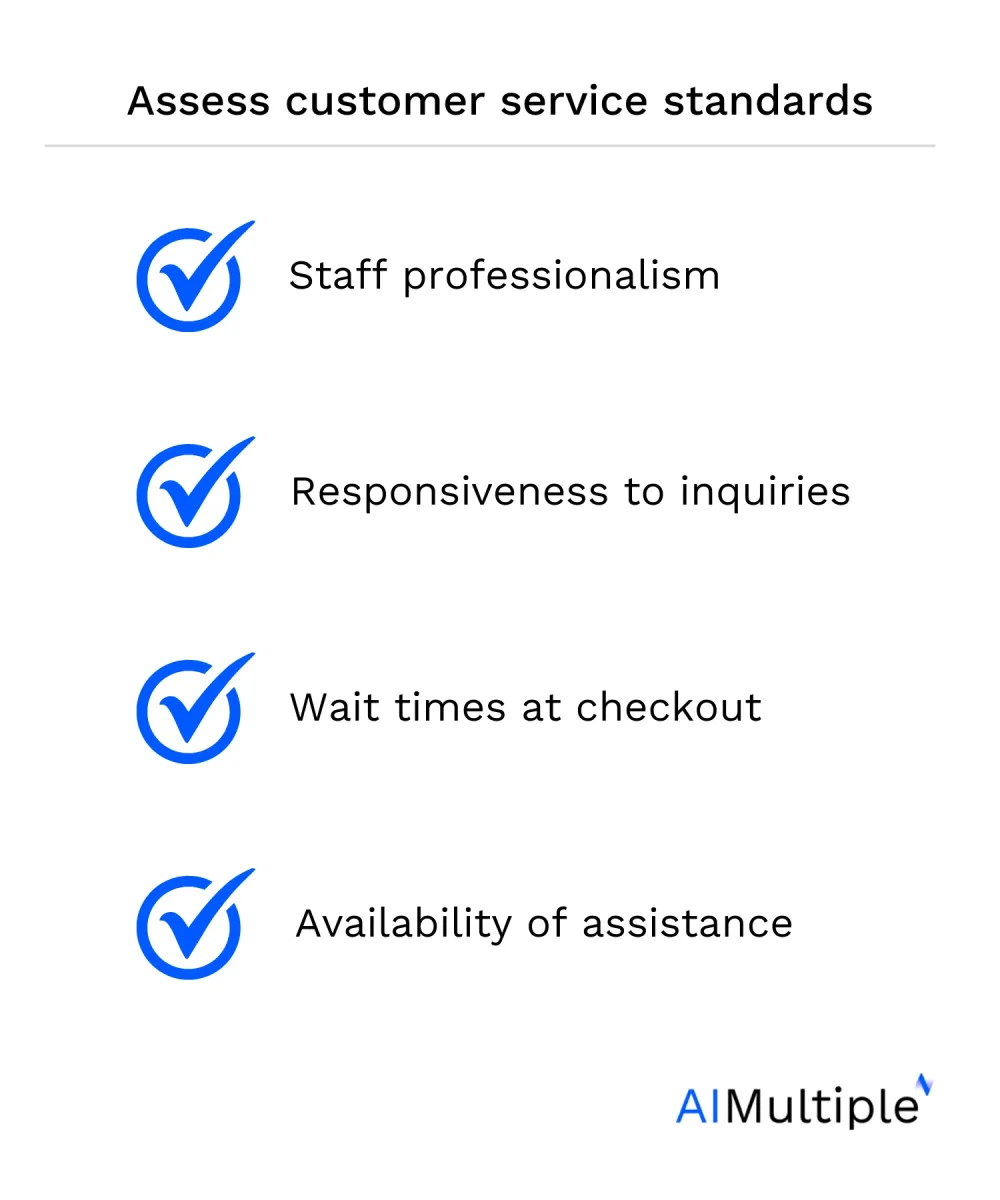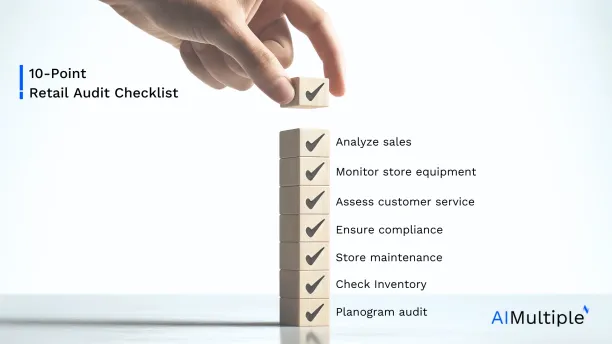Retail audits are essential for consumer product goods (CPG) or fast-moving consumer goods (FMCG) companies to ensure success at their retail end. While some brands use retail and planogram audit services, others handle these audits internally. This article presents a 10-point checklist to help CPG brands in executing comprehensive retail audits.
For those managing a large retail network, working with a retail audit service can efficiently ensure global coverage.
1. Conduct a planogram audit

A planogram audit is a cornerstone of any robust retail audit checklist. It involves assessing the compliance of product displays with predetermined planograms, ensuring that merchandise is strategically positioned to optimize sales and enhance the customer experience.
Consider a company that has recently launched a new line of skincare products. During a planogram audit, the field team notices that the new products are not displayed prominently as per the designated planogram. By rectifying this deviation, the company can increase visibility and potentially boost sales.
Recommendations
Planogram audits should be regular and cover your entire retail network. However, conducting planogram audits within an internal or global retail store network can sometimes be expensive. In this case, you can work with a planogram audit service provider that uses a crowdsourcing model, as it will have a greater global reach.
Hair care case study
A manufacturer of hair care products faced challenges in ensuring optimal product placement and visibility at various retail stores, particularly at point-of-sale (POS) points. To overcome these issues, the company used a crowdsourcing retail audit service, which coordinated multiple individuals to visit stores in different locations, evaluate planogram compliance through photography, and set key performance indicators (KPIs).
This initiative provided the manufacturer with accurate, real-time data on product presentation. The ability to swiftly address placement discrepancies and logistical challenges helped prevent potential sales losses and maintain compliance with retail agreements.1
2. Check inventory accuracy
Accurate inventory management is crucial for preventing stockouts, minimizing overstock situations, and ultimately maximizing sales opportunities. A retail audit checklist should include provisions for verifying inventory levels and identifying discrepancies between recorded and actual stock counts.
You can use the following steps to check for inventory levels:
- Verify stock levels against sales records and compare them to order quantities.
- Check for expired or damaged products that may skew inventory counts.
- Engage with store staff to understand any discrepancies and gather insights for improvement.
FMCG case study
A leading FMCG company conducted a retail audit that provided comprehensive insights into product inventory levels and performance across major retailers. Human auditors visited stores to gather data, enhancing the company’s market strategies with detailed reports on shelf placements and competitor analysis. The auditing approach allowed the client to optimize its retail execution, thus improving visibility and competitiveness in the market.2
3. Assess store maintenance
A clean and well-maintained store not only enhances the shopping experience but also reflects positively on the brand image. Retail audit checklists should include criteria for evaluating the cleanliness of store premises, such as shelves, floors, restrooms, and employee areas.
For instance, for pharmaceutical customers, assessing the condition of the stores can be essential, as it can significantly impact the effectiveness of their products. A drug manufacturing brand needs to check how its products are stored, the temperature at which they are stored, and the hygiene level of the storage facility.
3.1. Implementing safety protocols
Safety is non-negotiable in retail environments, and a comprehensive retail audit checklist should include provisions for assessing compliance with safety protocols and regulations. This encompasses areas such as fire safety, emergency exits, aisle clearance, and proper handling of hazardous materials.
4. Ensure compliance with promotional campaigns
Promotional campaigns play a pivotal role in driving sales and increasing brand visibility. A retail audit checklist should include provisions for assessing the execution of promotional activities, ensuring compliance with promotional guidelines, and evaluating their effectiveness in stimulating customer engagement.
For instance, a skin-care products manufacturer can use the following steps to check compliance:
4.1. Visual inspection of product displays:
Visit retail locations to ensure that skin-care product displays are prominently positioned and that promotional materials such as posters and samples are well-maintained and effectively showcase the products.
4.2. Review of compliance with brand standards:
Check that promotional activities align with the brand’s messaging and image, including verifying that any promotional claims are accurate and compliant with regulatory standards for skincare products.
4.3. Customer interaction and feedback collection:
Engage with store personnel to understand customer inquiries and feedback regarding the products being promoted. Gather insights on customer preferences, product effectiveness, and any concerns related to the promotion.
5. Assess customer service standards
Exceptional customer service is a hallmark of successful retail operations. A retail audit checklist should evaluate various aspects of customer interaction, including the following:

6. Monitor store equipment functionality
The smooth operation of equipment like cash registers, scanners, and refrigeration units is essential for seamless store operations. A retail audit checklist should include checks for equipment functionality, identifying any issues that may impede operational efficiency.
7. Analyze sales performance metrics
Effective retail management relies on data-driven insights into sales performance metrics. A retail audit checklist should include provisions for analyzing sales data, identifying trends, and evaluating the effectiveness of sales strategies and promotions.
8. Analyze competitor products
During regular audits, companies conduct competitor product analyses to assess their products against those of their competitors within the same retail outlet. Store managers can also provide this data, enabling the field team to generate reports that influence future business decisions and marketing strategies.
This part of the store audit allows brands to evaluate the effectiveness of their merchandising and pricing strategies. For instance, if a competitor’s promotional poster is more visually appealing than yours, it could negatively impact your sales.
9. Analyze customer traffic flow
Analyzing the flow of customer traffic within a store is a crucial aspect of a retail audit checklist. This analysis enables retailers to understand how customers navigate through the store, identify areas that attract the most attention, and pinpoint potential bottlenecks or underutilized spaces.
For example, suppose a retailer notices that a particular aisle consistently has lower foot traffic despite housing popular products. The CPG company representative conducting the audit can gather this information from the store manager and relocate the products closer to the entrance or a more central aisle to increase visibility.
Additionally, the company could implement directional signage to guide customers through less-trafficked areas, enhancing exposure to a broader range of merchandise.
10. Leverage technology for real-time insights
Incorporating mobile audit software with computer vision enables real-time data collection, facilitating prompt analysis and action. By leveraging technology, businesses can streamline audit processes, enhance accountability, and access actionable insights for continuous improvement.
Recommendations: You can equip your field team with such devices or provide computer vision-enabled apps to overseas crowdsourced teams, which can be used through personal smartphones to make the shelf scanning process more efficient.
Heinz case study
To optimize its retail audit process, H.J. Heinz replaced its paper-based retail audit system with an automated smartphone app, allowing auditors to directly record observations and instantly submit results, which significantly speeds up data reporting and analysis. However, the company still used human audits to visit stores and physically use the application on store shelves.

FAQs for the retail audit checklist
-
What is a retail audit checklist?
A retail audit checklist is a tool used by store managers and field teams during store visits to ensure compliance with brand standards, assess customer satisfaction, and identify business risks. This checklist forms part of regular audits and helps retailers evaluate operations across multiple locations, from product displays to parking lot conditions. It aids in managing inventory, employees, and equipment safety, while also monitoring promotional effectiveness and merchandising compliance. Store audit checklists streamline the auditing process, making it easier to conduct inspections, gather data, and create reports in real-time. By using mobile phones or software, this checklist saves time and enhances the quality of store audits, ultimately helping businesses increase sales and manage brand reputation more effectively.
-
How to do a retail store audit?
1. Prepare the Retail Audit Checklist: Create a detailed store audit checklist that includes criteria for evaluating inventory, customer satisfaction, safety, and compliance with brand standards.
2. Schedule and Plan Store Visits: Coordinate with store managers and field teams to conduct regular audits across various retail chains, ensuring efficient time management and utilization.
3. Conduct Thorough Store Inspections: Use mobile phones or specialized software to systematically assess different areas of the store, from product displays to parking lots, ensuring all tasks on the audit checklist are completed.
4. Gather and Analyze Data: Evaluate the data collected during store visits to identify business risks, assess employee performance, and measure compliance with retail operations.
5. Report Findings and Implement Changes: Create reports based on audit findings, discuss them with management, and implement necessary changes to enhance store performance, increase sales, and ensure customer satisfaction.
If you need further help in finding a vendor or have any questions, feel free to contact us:



Comments
Your email address will not be published. All fields are required.